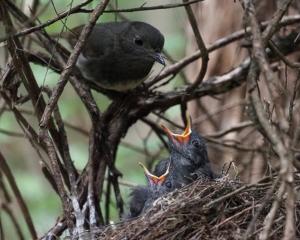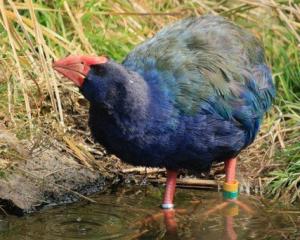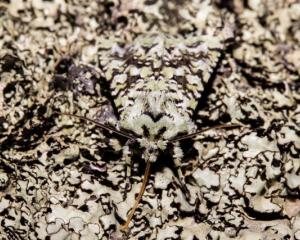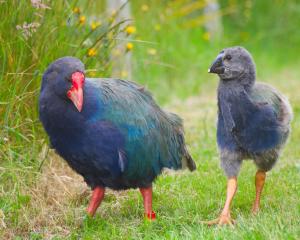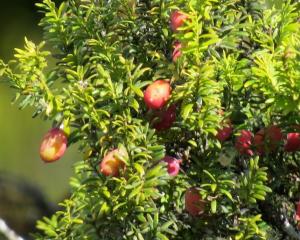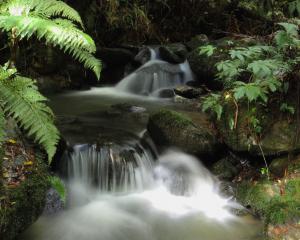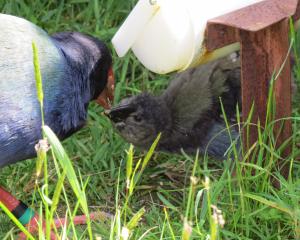Low cloud hangs over us, but not so low you can't see the Silver Peaks. The northeasterly is still bringing in the moisture that makes our ''cloud forest'' so productive, but there is scarcely a breeze and visibility is not an issue this morning. A little moisture is not going to be a problem; more important is being able to hear.
People approach quietly in twos and threes across the upper grassed area, where, we are told, the sound will float up to us. No sign of the takahe pair at this hour - Paku is sitting on another nest she has built. Poor soul - she doesn't realise her motherly efforts are bound to be disappointed again - the pair is infertile.
There! A three-note arpeggio. Tui or bellbird? Probably a bellbird. And again! That seems an appropriate note to begin on, as bellbirds are predominant here.
The sky is lightening. More people gather, bearing umbrellas or wearing parkas. Quiet greetings are exchanged, full of suppressed excitement and anticipation. Perhaps it would be better a little further along the Kaka track in among the taller trees, or how about the grassy Fernbird track? People move quietly around in search of the ideal spot.
Listen! Now you can hear some of the smaller birds, sounding a bit sleepy as yet - probably thrushes, blackbirds and greenfinches. The common garden birds make good use of the regenerating shrubs and new plantings. Redpolls too. I recognise that ''chitta chit chit''. I saw one the other day, its red crest and breast proclaiming the mating season.
Again the arpeggio, at regular intervals now. That seems to be the signal for others to join the chorus. The sounds are building, new calls constantly being added. It's difficult to identify the individual calls, but there's no need to listen hard now, the sound is clamorous.
Nods and smiles to those nearby. Yes, this is it - the glorious dawn chorus of the New Zealand bush! We all have known about it, but few have ever heard it. Not even the trampers among us who frequent the wilds, because these days birdsong in the bush is all too rare.
But here the sound builds and builds, just like an orchestra tuning up, every player doing their own thing, practising the phrase that remains a challenge, and playing it louder in order to be able to hear their instrument above the others. Tui vie with korimako, but that three-note arpeggio of the bellbirds persists and dominates. It gives structure to the chaos of calls rising in a crescendo.
Listen! There's a kaka calling. Let's go along to the feeding-station. Perhaps we can see them there. And indeed, around the feeder stand a dozen watchers and listeners. Tui and bellbirds are already drinking the sugar-water, while two kaka gambol in the trees trying out all of their calls - shrieks, warbles and coos - as if they know we want a full performance.
Now let's go into the older forest. The noise is tremendous now. At the next feeding-station are bossy, flighty bellbirds still trying to establish their pecking order, young tui, and more kaka up in the rimu trees. And another group of silent listeners, cast under a spell of enchantment. What a sound!
Then, as it gets lighter, an invisible conductor gives a signal and suddenly the din ceases. It's over. The new day's activities begin, with new songs, and for us it's time for breakfast.
Dawn chorus experiences for groups can be arranged by contacting Orokonui Ecosanctuary.
- Alyth Grant is a volunteer at the ecosanctuary and a trustee of the ONHT.


